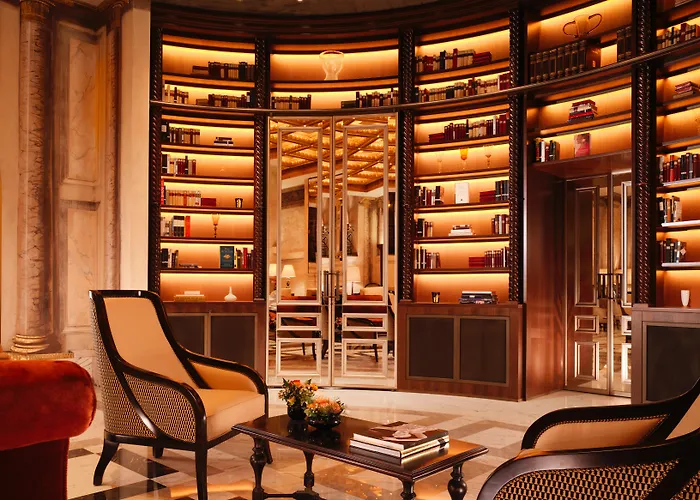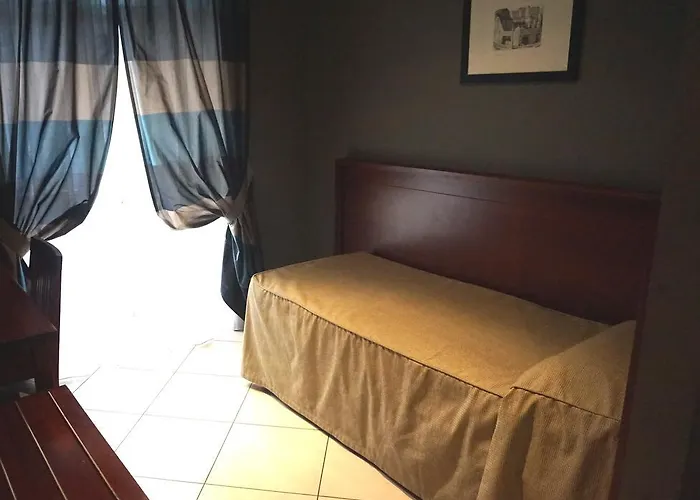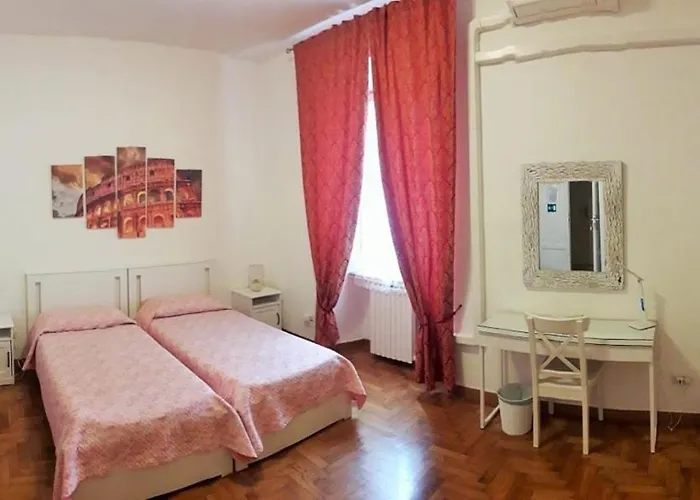Best Things to Do:
- 1. The Vatican Gallery in Rome
- 2. Room I: 12th-15th Century (Nicolò and Giovanni)
- 3. Room II: Giotto
- 4. Room III: Beato Angelico and Benozzo Gozzoli
- 5. Room IV: Melozzo da Forli
- 6. Room V: Ercole De' Roberti
- 7. Room VI: Carlo Crivelli
- 8. Room VII: Perugino and Pinturicchio
- 9. Room VIII: Raphael
- 10. Room IX: Leonardo
- 11. Rooms X and XI: Raphael School, Venetian Painting, and Barocci
- 12. Room XII: Caravaggio
- 13. Rooms XIII to XV: Pietro da Cortona and Crespi
- 14. Room XVI: Wenzel
- 15. Opening Hours and Ticket Prices for the Vatican Gallery
- 16. What to See in Rome
The Vatican Gallery in Rome
The collection of the Vatican Art Gallery features 460 paintings, organized in eighteen rooms based on chronological and school criteria, from the so-called Primitives to the 19th century. The collection includes some wonderful masterpieces by the most important artists of Italian painting, such as Beato Angelico, Giotto, Perugino, Raphael, Leonardo, Caravaggio, and Crespi.
Room I: 12th-15th Century (Nicolò and Giovanni)
This room contains several paintings, among which two stand out in particular: The Martyrdom of St. Stephen and the Discovery of His Relics by Bernardo Daddi, and The Last Judgment by Nicolò and Giovanni. The Martyrdom of St. Stephen and the Discovery of His Relics consists of eight panels that formed the base of an unidentified polyptych. The small paintings depict the martyrdom of St. Stephen and the story of the finding of his relics according to the medieval narrative from the Golden Legend by Jacobus de Voragine.
Room II: Giotto
There are three paintings in this room worth noting: The Stories of St. Nicholas of Bari by Gentile da Fabriano, The Stefaneschi Triptych by Giotto di Bondone, and The Redeemer Blessing by Simone Martini. The panel by Simone Martini elegantly and refinedly depicts Christ in half bust, with his right hand raised in a gesture of blessing and his left hand resting on a book.
Room III: Beato Angelico and Benozzo Gozzoli
In this room, we highlight two important works by Beato Angelico, Stories of St. Nicholas of Bari and Madonna with Child and Saints Dominic and Catherine, and one by Benozzo Gozzoli, Madonna della Cintola. The Stories of St. Nicholas of Bari illustrate episodes from the saint's life. In the other painting by Angelico, the Virgin is depicted playing with the Child, who holds a rose symbolizing wisdom. The painting by Gozzoli, a favored student of Beato Angelico, portrays the Madonna surrounded by angels offering, as proof of her ascent to heaven, the girdle to St. Thomas, who did not want to believe what others told him regarding the death, burial, and assumption of Mary, having not witnessed it firsthand.
Room IV: Melozzo da Forli
Two particularly relevant paintings by Melozzo da Forli in this room: Sixtus IV appoints Bartolomeo Platina as Prefect of the Vatican Library and The Angel Playing the Lute. The former is a detached fresco from one of the rooms of the ancient Vatican Library, later transferred to canvas. The protagonists, whose features are well-defined, can be considered true portraits, placed within imposing architecture that gives a grand dimension to the scene.
Room V: Ercole De' Roberti
In this room, we note the painting The Miracles of St. Vincent Ferrer by Ercole de' Roberti, which depicts various episodes: the Healing of the Disabled Woman, the Resurrection of a Wealthy Jewess, the Rescue of a Child in a house struck by fire, the Resurrection of a child killed by his deranged pregnant mother, and the Healing of an Injured Person.
Room VI: Carlo Crivelli
Two significant works within this room: The Coronation of the Virgin and Saints by Alunno and The Pietà by Carlo Crivelli.
Room VII: Perugino and Pinturicchio
Among the works in this room, we must give particular prominence to Madonna with Child and Saints Lawrence, Louis of Toulouse, Herculano, and Constantius and St. Benedict; St. Flavia; St. Placid and another canvas of St. Benedict; St. Flavia; St. Placid; both by Perugino. Also not to be forgotten is The Coronation of the Virgin, by Pinturicchio and G. B. Caporali. The first altarpiece presents a very balanced and harmonious composition, in which all elements agree remarkably, just like those of the second panel where the figures are rendered with refinement in colors and precise details, just as Perugino used to paint. The third panel, by Pinturicchio, portrays at the top The Coronation of the Virgin with two angels playing music, while below, kneeling in the foreground are Saints Francis of Assisi, Bernardino, Anthony of Padua, Louis of Toulouse, and Bonaventure among the twelve apostles divided into two groups.
Room VIII: Raphael
In this room, many tapestries and paintings by Raphael, including The Coronation of the Virgin, The Annunciation, The Adoration of the Magi, The Presentation at the Temple; Faith, Charity, Hope; Madonna of Foligno; Transfiguration.
Room IX: Leonardo
There are two must-see paintings in this room: The Mourning of the Dead Christ by Giovanni Bellini and St. Jerome by Leonardo da Vinci. Bellini's famous painting has such a majestic composition that stands out for the solemn and poignant imprint of the representation and for the deep emotional connection among the protagonists.
Rooms X and XI: Raphael School, Venetian Painting, and Barocci
The Poor Clares from the Monteluce convent near Perugia commissioned the young Raphael to create an altarpiece with the Assumption of the Virgin in 1503. Subsequently, two more contracts were signed for a panel that was instead to depict the Coronation of the Virgin. Upon Raphael's death, the work was however incomplete, and another contract was made with his students Giulio Romano and Giovan Francesco Penni, who delivered the altarpiece in 1525. The Madonna of St. Nicholas of the Frari, originally discarded, depicts the Virgin with the Child and angels in the clouds and below Saints Catherine, Nicholas, Peter, Anthony, Francis, and Sebastian in devotion. The Vision of St. Helena portrays the mother of the Roman Emperor Constantine asleep, sitting with her head resting on one hand; the sacred story states that this woman had the vision that led her to the discovery of the true Cross. In Room XI, we cannot forget to mention the canvas of the Annunciation by Barocci and the Resurrection of Lazarus by Girolamo Muziano. The first canvas is dominated by the religious motif and shows a glimpse of the Ducal Palace of Urbino in the background.
Room XII: Caravaggio
The beautiful painting by Caravaggio present in this room: The Deposition from the Cross. In this canvas, Caravaggio does not portray the Burial, nor the Deposition in the usual way, as Christ is not depicted at the moment he is lowered into the tomb, but when, in the presence of pious women, Nicodemus and John lay him on the Stone of Anointing, that is, the tombstone with which the grave will be closed.
Rooms XIII to XV: Pietro da Cortona and Crespi
In these rooms, do not miss the Vision of St. Francis by Pietro da Cortona, which is a slightly smaller duplicate of the altarpiece that Pietro da Cortona painted in 1640 - 1641 for the Montauto Chapel in the church of the Annunziata in Arezzo. There are 4 paintings of particular interest located in Room XIV: Portrait of Clement IX by Carlo Maratta, Vision of St. Francis Xavier by Baciccia, Madonna with Child by Sassoferrato, and the Garland of Flowers with "Ecce Homo" by Daniel Seghers and Erasmus II Quellin. Baciccia's small painting portrays St. Francis Xavier in the foreground with the crucifix held tightly to his chest, surrounded by angels and cherubs witnessing his agony. In Room XV, there is a surprising beauty in this room the painting by Giuseppe Maria Crespi, Portrait of Benedict XIV. In this portrait, Crespi purposely increased the size of the protagonist's figure, modified his clothing, and added attributes to emphasize the papal office he had just assumed.
Room XVI: Wenzel
The canvas present in this room is the symbol of the climactic moment of Wenzel Peter's career, an animalist painter who has captured with exceptional naturalism animals of various species, immortalized in their moments of rest or struggle. The Terrestrial Paradise represents the peak virtuosity of the artist, who depicts more than two hundred animals from around the world around the figures of Adam and Eve.
Opening Hours and Ticket Prices for the Vatican Gallery
Address: Vatican City How to get there:
Metro Line A stops: Ottaviano-S.Peter-Vatican Museums; Cipro (both 10 minutes on foot).
Bus (stops) 49, in front of the Museo entrance 32, 81, 982, Piazza del Risorgimento (terminus) (5 minutes on foot) 492, 990, Via Leone IV / Via degli Scipioni (5 minutes on foot).
Tram 19, Piazza del Risorgimento (5 minutes on foot).
Opening Hours: Every day 9:00 AM - 4:00 PM.
Closures Sunday, except for the last Sunday of each month (with free admission from 9:00 AM - 12:30 PM; closure at 2:00 PM), unless it coincides with Easter, June 29 (St. Peter and Paul), December 25 or 26 (Christmas or St. Stephen) January 1, 6 February 11 February 22 March 19, 28 June 29 (St. Peter and Paul) August 15 November 1 December 8, 26.
Ticket Prices: 16 € The entrance ticket to the Vatican Museums allows access to the Vatican Museums and the Sistine Chapel for the day of issuance only.
What to See in Rome
Discover 20 more things to do and see in Rome!














